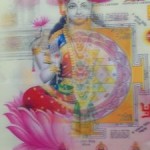Practice Notes: Joy in meeting
“On the occasion of a great delight being obtained, or on the occasion of delight arising from seeing a friend or a relative after a long time, one should meditate on the delight itself and become absorbed in it, then his mind will become identified with it”.
Vijnanabhairava (transl. Jaideva Singh) v71
In the previous post for this month I gave some short reflections on an “opportunistic practice” – grounded in verse 92 of the Vijnanabhairava. I’ve been reflecting on the possible consequences of this kind of approach to practice – and I think it is less about achieving – temporarily – a particular state, condition, or even a “result”; but rather, a process of habituating oneself to a general “stance” or attitude – that any moment of engagement can (potentially) unfold into an intensification of wonder, joy, delight (see Tantra keywords: Relational for some earlier reflections).
Verse 71 of Vijnanabhairava roots this unfolding of delight in everyday, human encounters and the recollection of of those moments of feeling: on the occasion of delight arising from seeing a friend or a relative after a long time, one should meditate on the delight itself.
i don’t think this requires any further comment.


